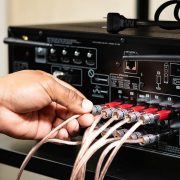The forex market is a huge and highly volatile entity and one that boasted a total value of $2.409 quadrillion by the end of 2019. This hints at the popularity of live trading across the globe, with investors tempted into forex by the inflated leverage and minimal deposit requirements.
However, virtually every successful live trader started out by investing through a demo account, which replicates a simulated, real-time environment and allows investors to hone strategies without risking their hard-earned capital.
But when should you transition to a live account, and what steps can you take to do this successfully? Let’s find out!
Why You Should Use a Demo Account
Typically, you can utilize a demo account for a period of between three and six months depending on your choice of forex broker.
But what are the main benefits of this? In simple terms, using a demo account helps to bridge the gap between theoretical learning and practical marketplace experience, which can be seismic given the complexity of forex trading and the voracity with which prices change over time.
More specifically, a demo account lets you test various trading strategies and tailor them to suit the corporeal marketplace, without causing you to risk your capital until you’re completely sure of your position.
Similarly, you can use a demo account to identify alternative markets and asset classes over time, as you look to create a strategy for diversifying your portfolio in a practical and effective manner.
How do You Switch From a Demo to a Live Account?
From a practical perspective, the fundamental process of switching to a live account is relatively straightforward.
Although this varies from one broker to another, you will have to provide a certain amount of documentation prior to opening a live account. This will be required to verify your identity and residence, while a broker may also ask for supplementary documentation to support their own regulatory requirements.
Usually, you can submit clearly defined copies of your photo ID securely online, and the broker will notify you once your identity has been fully verified.
You’ll also need to fund your live account directly, often with as little as £100 (although limits and commissions will also vary depending on your choice of broker). The range of viable payment methods will also vary from one platform to another, but most accept bank transfers, Visa debit card payments and PayPal transactions as standard.
Understanding the Psychological Impact of Transitioning
On a final note, it’s important to understand that live trading is significantly different from investing through a demo account.
It’s certainly different from a psychological perspective, especially in instances where you begin to lose money and see your working capital diminished.
You’ll definitely need to prepare for this eventuality while utilizing automated and algorithm trading to minimize the risk posed by human error and emotive trading.
You should also start preparing for this transition while using a demo account, by adjusting your mindset and trading as though you’re committing your own capital.














Comments